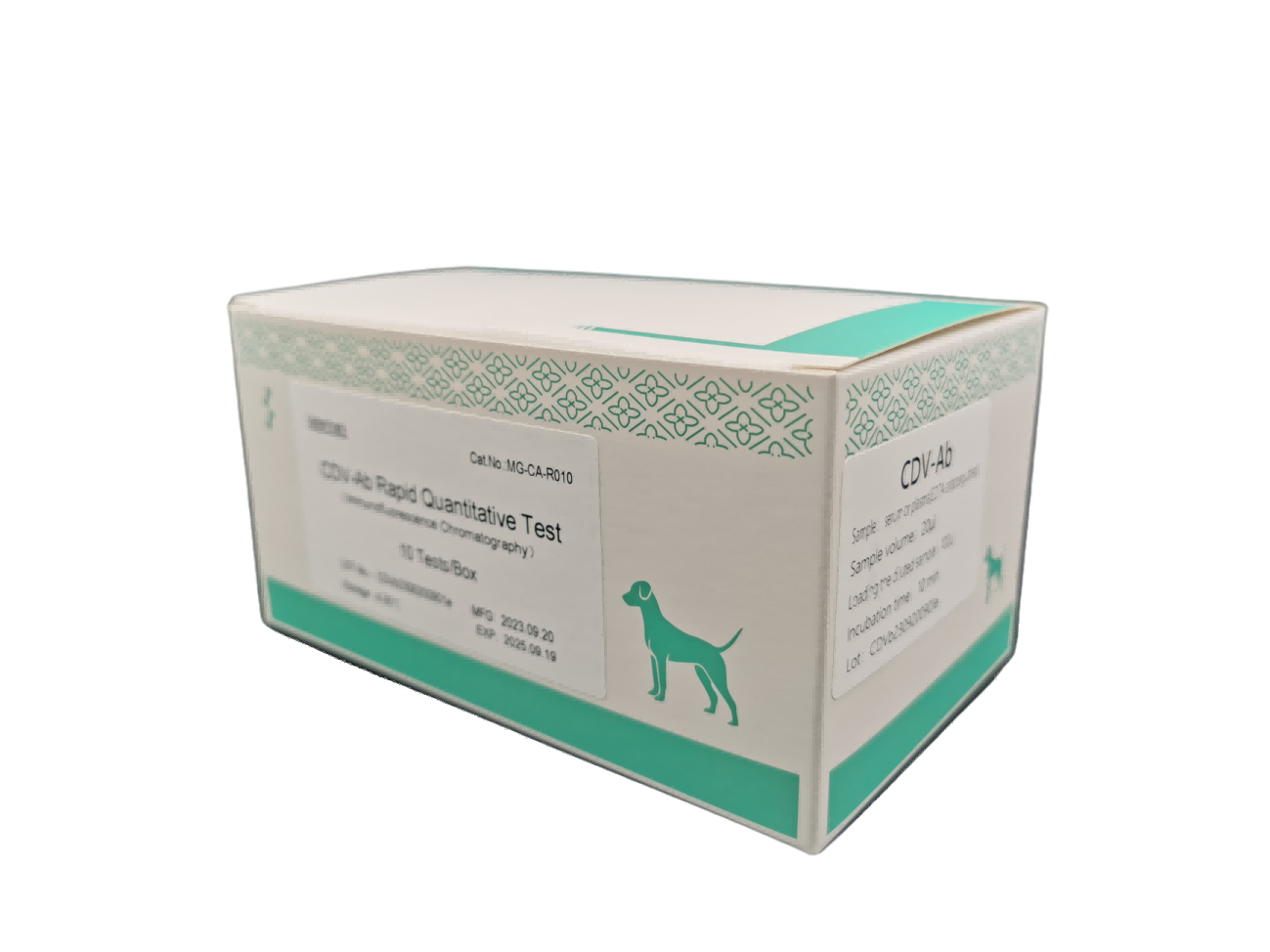


Key attributes

SPECIFICATION
Package Size: 10 Tests/Box
Catalog Number: MG-CA-R019
The cNT-proBNP test is a fluorescence immunoassay designed for the quantitative determination of N-terminal pro-brain natriuretic peptide (cNT-proBNP) concentration in canine serum or plasma. It aids in evaluating the risk of cardiac failure in dogs.
For in vitro diagnostic use only. Professional use only.
This test employs a quantitative double-antibody sandwich fluorescence immunoassay technique. The fluorescent signal intensity correlates with the amount of cNT-proBNP captured. Results are expressed in pmol/L.
| Contents | Quantity |
|---|---|
| Individual Sealed Pouches | 10 |
| - Test Device | Per pouch |
| - Desiccant Pouch | Per pouch |
| ID Chip | 1 |
| Instructions for Use | 1 |
| cNT-proBNP Sample Buffer Tubes | 10 |
| Pipette Tips | 10 |
Materials Required but Not Provided:
Immunofluorescence Analyzer
Timer
Pipette
Centrifuge
Store the test kit at 4–30℃ until the expiration date.
Perform the test at 18–28℃ after opening the pouch.
Once the pouch is opened, the test should be used within 30 minutes.
This test can be performed using serum or plasma (EDTA anticoagulant recommended).
Separate serum or plasma from blood within 3 hours of collection. If hemolysis is severe, obtain a new specimen.
Perform the test immediately after specimen collection. If testing is delayed, store the specimen at 2–8℃ for no longer than 72 hours or below -20℃ for long-term storage.
Before testing, bring all materials to room temperature. Ensure that frozen specimens are fully thawed and mixed well. Avoid repeated freezing and thawing. Only clear, non-hemolyzed specimens should be used.
Refer to the Immunofluorescence Analyzer Operation Manual for detailed instructions.
Place the Test Device on a clean, level surface.
Insert the ID Chip into the analyzer and click "Read ID Chip." Ensure the Test Device lot number matches the ID Chip number.
Pipette 50 μl of the prepared sample into the cNT-proBNP Sample Buffer and mix gently.
Transfer 100 μl of the mixed sample to the sample well (S) on the Test Device. Avoid forming bubbles.
Select the Test Mode:
Standard Test: Insert the Test Device into the analyzer immediately, select "Serum/Plasma," and start the test. The results will be displayed automatically.
Quick Test: Let the Test Device sit at room temperature for 10 minutes, then insert it into the analyzer, select "Serum/Plasma," and start the test. Results will be displayed automatically.
Results will be displayed on the screen, printed automatically, or printed manually by selecting "Print."
Each cNT-proBNP Rapid Quantitative Test includes an internal control for routine quality control. If an invalid result occurs, the analyzer will display an error message, indicating that the test should be repeated.
Detection Range: 450 ~ 10,000 pmol/L
Conversion Factor: 1 pmol/L = 8.457 pg/ml
Reference Ranges:
| Result (pmol/L) | Suggestion |
|---|---|
| ≤ 900 | Normal |
| 900 – 1800 | Suspected (SUS) |
| > 1800 | Abnormal |
Each laboratory should establish its own reference range based on the population being tested.
For in vitro diagnostic use only.
Inspect the packaging and labels before use. Do not use the product if the pouch is damaged or not properly sealed.
Do not use the test device beyond the expiration date.
Use one pipette tip per specimen.
Technical or procedural errors, along with unlisted substances in blood specimens, may interfere with the test and result in erroneous outcomes.
